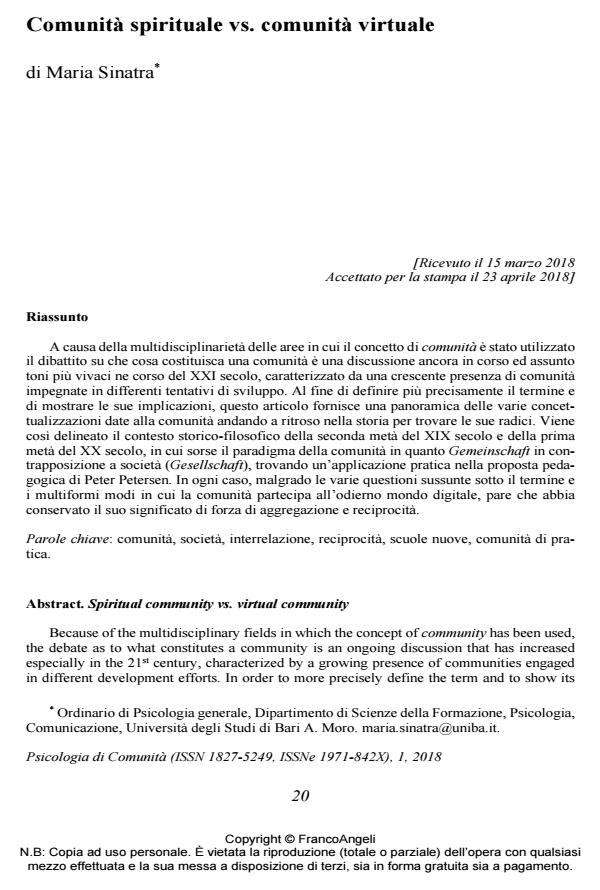Spiritual community vs. virtual community
Journal title PSICOLOGIA DI COMUNITA’
Author/s Maria Sinatra
Publishing Year 2018 Issue 2018/1
Language Italian Pages 13 P. 20-32 File size 196 KB
DOI 10.3280/PSC2018-001003
DOI is like a bar code for intellectual property: to have more infomation
click here
Below, you can see the article first page
If you want to buy this article in PDF format, you can do it, following the instructions to buy download credits

FrancoAngeli is member of Publishers International Linking Association, Inc (PILA), a not-for-profit association which run the CrossRef service enabling links to and from online scholarly content.
Because of the multidisciplinary fields in which the concept of community has been used, the debate as to what constitutes a community is an ongoing discussion that has increased especially in the 21st century, characterized by a growing presence of communities engaged in different development efforts. In order to more precisely define the term and to show its implications, this article gives an overview of the various conceptualizations given to community by going far back in history to trace its roots. Thus, the historical-philosophical context in the second half of the 19th and early 20th century is outlined, in which the paradigm of community as Gemeinschaft arose in contrast with society (Gesellschaft) and found a practical application in Peter Petersen’s pedagogical proposal. However, despite the various issues subsumed under the term and the multifaceted ways in which community participates in today’s digital world of today, community seems to preserve its original meaning of aggregation and reciprocity strength.
Keywords: Community, society, relationship, reciprocity, new schools, community of prac-tices
Maria Sinatra, Comunità spirituale vs. comunità virtuale in "PSICOLOGIA DI COMUNITA’" 1/2018, pp 20-32, DOI: 10.3280/PSC2018-001003